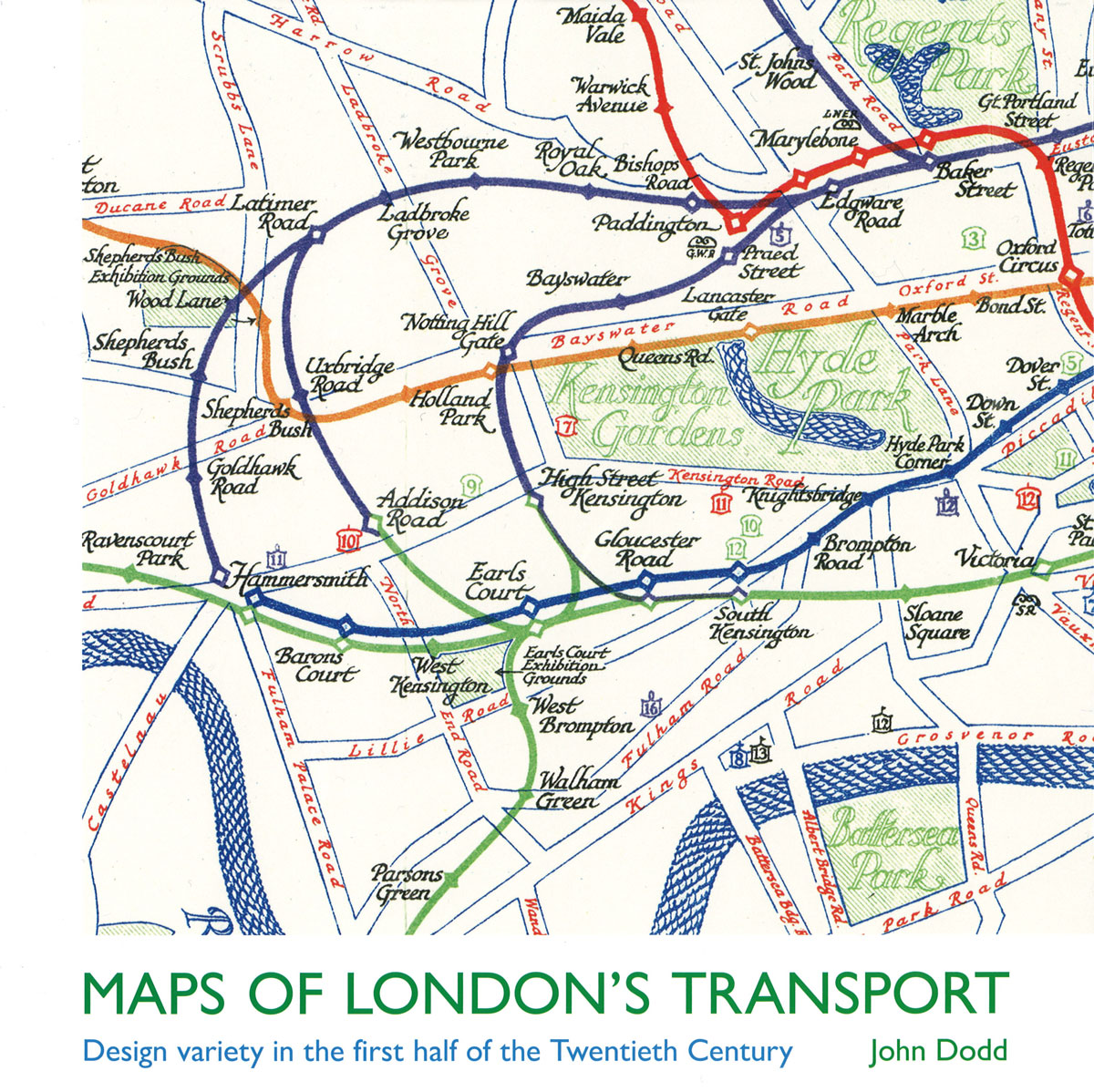Post
Book review: London's Transport and London Underground
28 Apr 2017
Reviews by Society member Darren Leftwich of two recent books that have come into the office.These can be ordered from our bookseller partner John Sandoe Books - click here to find out more.A great selection of books about London can be found on the John Sandoe London Society page here.Maps of London’s Transport: Design variety in the first half of the Twentieth Century, John Dodd, Capital History, 2016, HB, £35, 156pp 9781854144003 This large format hardback book covers the developments of all modes of public transport offered in London between 1900 through to 1950. It boasts that it is the first book to cover this topic and time period in this way, and therefore will be a welcome volume on the shelf for those interested in the evolution of the capital’s transport infrastructure as well as those with a more general interest in the more recent growth and development of London.
The 10 chapters each focus on different modes of transport and/or time periods. It may have been more user friendly to have either adopted a chronological approach and cover all transport forms across each decade or to have had a separate chapter on each mode of transport. Having said that, the introductory statement indicates that the adopted approach lends itself to the gradual development of a more integrated approach to London’s public transport network.
The illustrative content covers the maps and documentation produced by the various companies to demonstrate route networks and to promote the various services provided. As this is a rather generously shaped, square, book, the clarity of the images is very clear and easy to follow – the reproduction quality is to be commended. The commentary alongside the images is helpful, although in some places can be repetitive. The supporting text gives clear, and not too detailed, historical context to the decade or theme presented in each chapter. It is evident that thorough research has been conducted to produce both the commentary and the historical context and the author acknowledges the support of the London Transport Museum collection in the production of this volume.
This will be a much valued and accessible resource for the leisure reader, the London historian, the transport enthusiast and those conducting academic research, particularly if there are subsequent volumes covering the later half of the twentieth century and the continued growth of London and London’s public transport network. Building London’s Underground: From Cut-and-Cover to Crossrail, Antony Badsey-Ellis, Capital Transport, 2016, HB, £30 376pp 9781854143976 This is a very comprehensive and weighty volume covering the construction of the world’s first underground rail system from its origins through to current rail expansion programmes in the capital. With over 150 years of underground rail travel history in London there is much to cover and as a consequence the text is fairly small and some of the accompanying visual imagery is rather compact and the annotation difficult to comprehend.
However, the text has been exceptionally well researched and the detail of content is to be commended. The appendices and references are particularly thorough and illustrate the depth of research undertaken by Badsey-Ellis. Surprisingly, the most recent examples of underground rail expansion in London (Jubilee Line (14 pages), Heathrow Terminal 5 (3 pages) and Crossrail (27 pages) seem to get a disproportionately low coverage when compared to the nineteenth and twentieth century development and growth of the network – these being newer developments which have received limited or no coverage in previous publications. I particularly like the use of colour illustration and photographs in the more recent works programmes as these bring the textual accounts to life and for the lay reader the subject matter is more meaningful. Understandably there are few colour images prior to the 1960s, but I must say that the black and white imagery is atmospheric and thought provoking – a great discussion point for rail and engineering enthusiasts.
This is a thorough text , but perhaps in places too thorough. The readership for such a volume is going to be the engineering, planning and Underground enthusiast fraternity. Should subsequent versions or revisions be commissioned of this text then I would hope that there is some condensing of depth to make the very interesting subject matter more accessible and reader engaging. John Sandoe Books have selected dozens of titles about the capital that will be of interest to members. Click here to see what's currently available.


